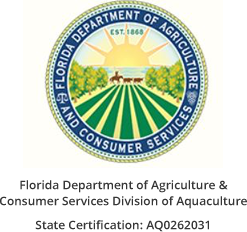In a saltwater marine tank, copepods are beneficial in a variety of ways. Copepods eat detritus and algae as well as a natural food source for mandarin gobies scooter blennies as well seahorses, however many fish, corals and other invertebrates enjoy eating copepods. Copepods can be added to a refugium or to the rock work within the aquarium for sufficient hiding and reproductive opportunities. Copepods are a group of small crustaceans found in the sea and nearly every freshwater habitat. Many species are planktonic (drifting in sea waters), but more are benthic (living on the ocean floor). - Wikipedia
Research on the copepods databases shows copepods feature anatomical characteristics that vary quite considerably among the 10 orders that make up the Copepod subclass. The diminutive stature of the copepod (most fall within a range of 1 to 2 millimeters) causes its armored exoskeleton to be entirely transparent in most cases. The majority of copepods feature a compound eye in the center of its head -- with the eye typically colored bright red -- but there are copepods that also have two cuticular lenses as well as subterranean copepods that have no eyes at all.
Copepods and amphipods are often included within marine aquaria, with hobbyists featuring these crustaceans for a wide
variety of reasons. The scavenging and foraging behaviors exhibited by copepods and amphipods frequently serve as a primary reason cited by marine aquaria hobbyists, but copepods and amphipods often contribute a great deal more beyond their scavenging and foraging habits.
Saltwater aquaria hobbyists often include both amphipods and copepods within their tanks to add to the overall biodiversity of the contained marine ecosystem, and the amphipods and copepods will contribute to the cleanliness of the tank as they scavenge and forage for the detritus left behind by the other tank inhabitants. Since algae is a common source of food for amphipods and copepods, many hobbyists enduring issues with algae growth will introduce amphipods and copepods as a biological control.
Copepods and amphipods are also utilized as a source of food in marine aquaria, especially for saltwater aquaria featuring species known for their difficult dietary preferences. Seahorses and mandarin dragonets, for example, are known to feed on copepods and amphipods, and most saltwater aquaria hobbyists consider the addition of copepods and amphipods entirely beneficial from any number of other perspectives. Many people culture their own Copepods to insure a constant food source for their picky eaters.
